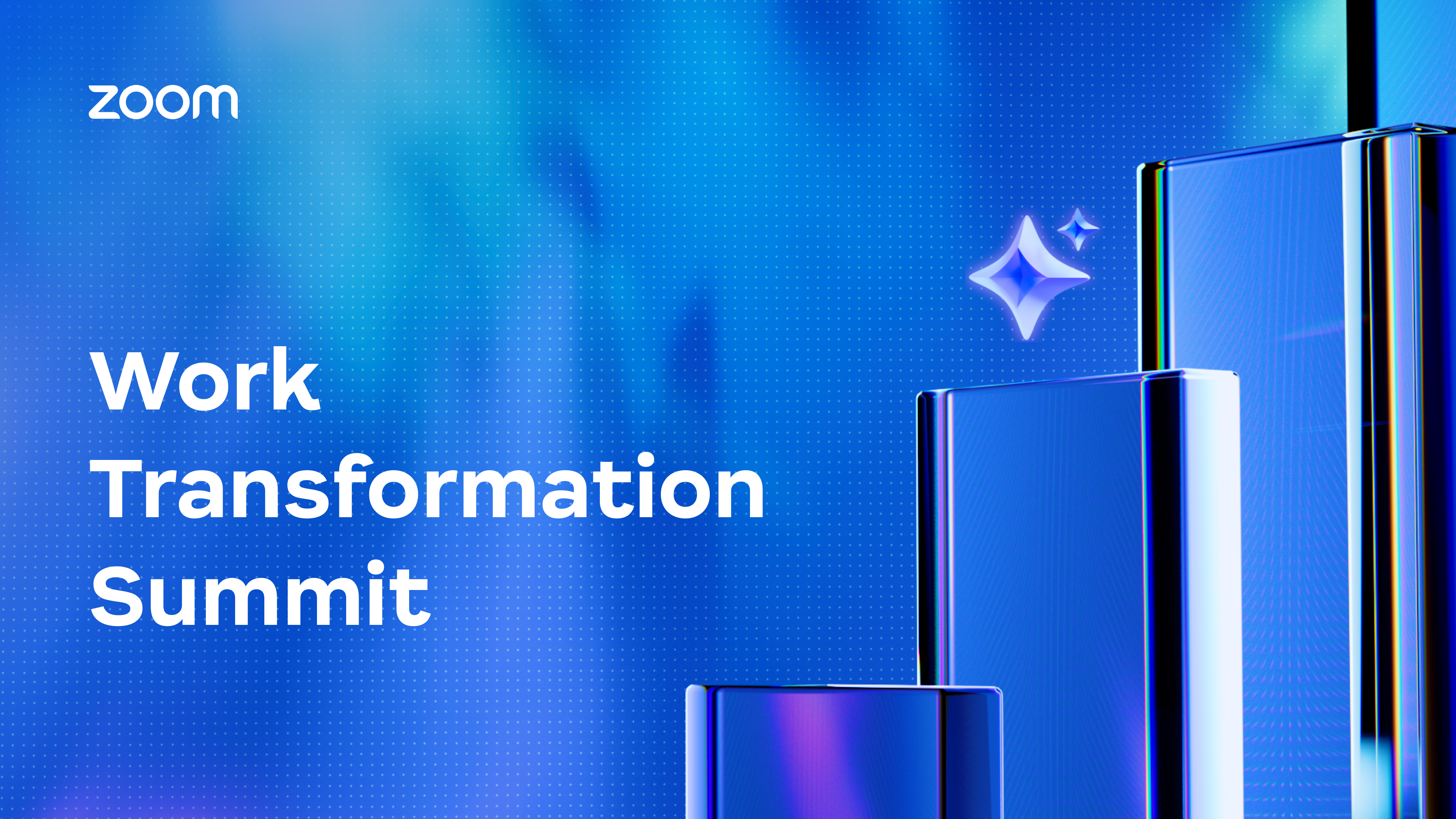
Meet Zoom AI Companion, your new AI assistant!
Boost productivity and team collaboration with Zoom AI Companion, available at no additional cost with eligible paid Zoom plans.
At our Work Transformation Summit in May 2025, we explored how to better understand what productivity is and what metrics, habits, and mindsets we need for this new AI-driven era of work.
Updated on May 20, 2025
Published on May 15, 2025


As work and technology continue to evolve, productivity isn’t just about working faster—it’s about working smarter. It's time to redefine what it means to be productive, challenge outdated notions of busyness, and explore how to minimize fragmentation, automate repetitive tasks, and enable high-impact work—helping teams unlock new efficiencies and drive meaningful outcomes.
Get an in-depth look at the insights from our Work Transformation Summit.
Rahaf Harfoush, digital anthropologist and New York Times best-selling author, started by breaking down how we look at productivity. Many of us measure success by how much work we get done—how many meetings, emails, drafts, projects, or hours we worked—instead of the impact our work has.
It can be difficult to challenge our existing mindset around work:
Creative ideas can't be forced, yet we try to push through instead of taking a break.
Focus requires isolation, yet we let every notification interrupt us.
Rested workers perform better, yet we push ourselves to exhaustion.
"The challenge is cultural, not cognitive. We applaud visible effort because it’s easy to measure. We distrust invisible incubation because it looks like nothing. Yet invisible incubation is where the magic happens. That means explicitly valuing creativity, innovation, and learning as much as (or more) than sheer output."
One of the ways we can shift our mindset is by leaning on AI to handle repetitive tasks, allowing us to focus on deep, meaningful work. Even when faced with complex problems, AI is more than just a time-saving tool. It can serve as a brainstorming partner to enhance our creativity. "The real measure of productivity in the age of AI won't be how much we do; it will be how deeply, how wisely, and how imaginatively we think," Rahaf said. Success comes from making time for deep work where we can learn, connect, and celebrate humanity while building productive workplaces through creativity, sustainability, and collaboration.
Jeremy Utley, Stanford faculty member and author of Ideaflow: The Only Business Metric That Matters, shared some practical advice on building habits to integrate AI into your workday. "Teams need to shift from viewing AI as a technology to seeing it as a teammate," said Utley. "Teams focused on effectiveness rather than efficiency had better outcomes and more meaningful interactions with AI."
Jeremy suggests starting with personal tasks when introducing AI into your workflow, as lower-stakes environments make experimentation easier. For organizational adoption, treat it as a culture change rather than an IT roll out, involving every department and having support systems like office hours, chat channels, and leadership modeling AI use. It's even important to share when your experiments don't work out, as there's still value in that experience.
Burnout remains a crucial concern for work environments, including AI transformation. When redesigning workflows, test and adjust to ensure they're sustainable and scalable. Leaders should demonstrate healthy work-life balance by taking rest periods and encouraging their teams to do the same.
Christie Burke hosted a panel with Christine Inkpen, product manager at Bridgewater Associates, and Laurie Osumi, head of financial systems excellence at Zoom. They discussed the practical results from implementing AI into their departments, creating more efficient, creative processes.
At Bridgewater Associates, the team are continuously evaluating enterprise AI tools. In one success, an AI agent is solving 20% of support volume. The team is also exploring AI-powered due diligence systems to generate faster first drafts, speeding up manual processes. When faced with a large tax rate project, Laurie and her team built an AI-assisted review system to automatically check and correct rates, reducing their overall processing time by up to 90%.
But their real success came from their people. Christine's team at Bridgewater Associates focused on creating an environment where you can quickly and safely run AI experiments by establishing an AI working group and setting clear frameworks. Laurie's team at Zoom created a collaborative environment where team members consistently test, adapt, and share use cases—including successes and failures—to encourage others to join in.
"AI can help us redesign work from the inside out. It can shoulder the drudgery, protect our attention, give us room to think, and even become a brainstorming partner that coaxes us into wilder, more original territory."
Believe it or not, we are still in the early stages of this technological transformation. Leaders and teams need to shift from tracking productivity to monetizing efficiency—leveraging AI to automate routine work, enhance decision-making, and unlock greater business impact, all without falling into the burnout trap.